11 Smart Student Desk Layouts
How classroom seating—from traditional rows to Socratic circles and L-shaped clusters—alters classroom dynamics and shapes learning outcomes.
Your content has been saved!
Go to My Saved Content.Call it Newton’s first law of classroom seating: A desk at rest tends to stay at rest.
But an adaptive approach to desk layout can have a profound effect in the classroom, subtly influencing student focus and engagement, reshaping classroom dynamics, and curbing off-task behavior. Just as architects deliberately design spaces to serve specific purposes, teachers can configure and reconfigure seating to support different types of activities, from individual work to collaboration and discussion.
“When tables stay the same all day, every day, so too can the learning,” says Matt Pitman, a head of school in Australia. “A static room can send the message that learning is linear and predictable, when in fact it is dynamic and evolving.” What works for a lecture may not work for a group discussion, and understanding these trade-offs can be the difference between a successful lesson and one that falls flat.
Of course, not every layout works for every space. If it’s already a tight squeeze in your classroom or the desks are too heavy or awkwardly shaped to move frequently, some of these ideas might feel out of reach. But even within tight constraints, small adjustments—or hybrid configurations—can make a big difference.
Here are 11 smart desk layouts—and the reasoning behind their use—to try in your classroom.
1. Old School: Traditional Rows
A reliable layout for teacher-led instruction.
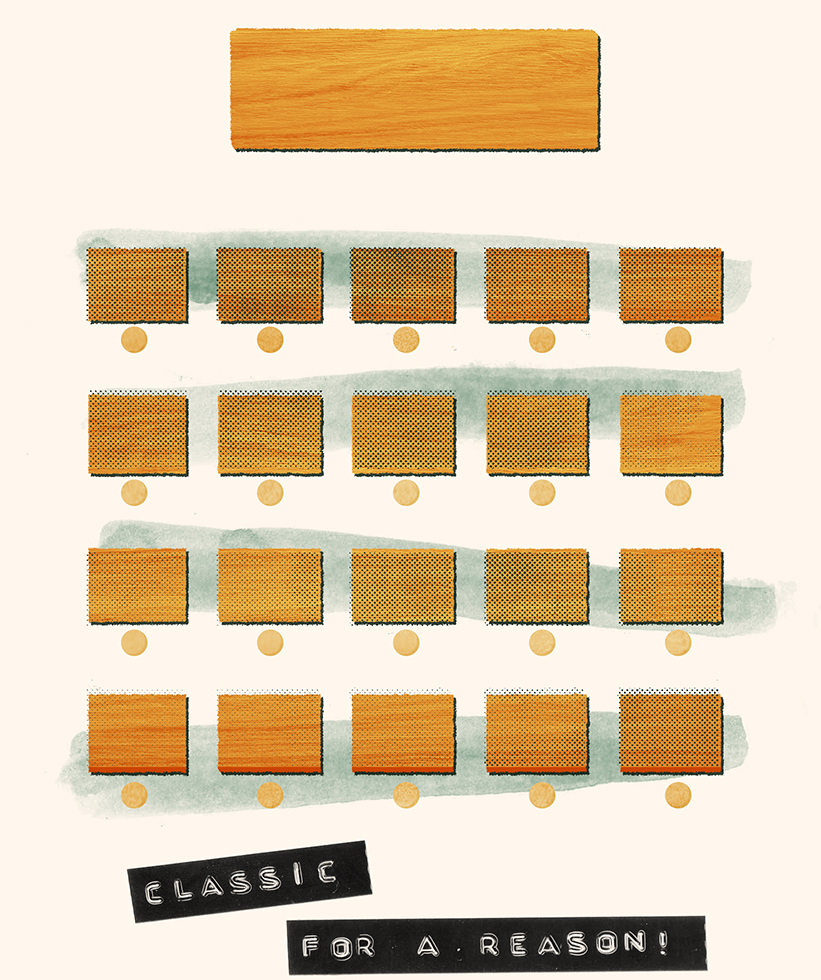
Traditional rows—desks neatly arranged so that all students face the front of the room—might seem old-fashioned, but they’re one of the most effective setups if you want students to pay attention to instructions or a lesson. Standard rows make “interactions among peers inconvenient” and can “minimize disruptive behavior and maximize on-task behavior during individual activities,” researchers explain in a 2020 study. Notes Pitman: It’s in this configuration that “we launch into the initial phases of the lesson: direct instruction, modeling, and the first moments of independent practice.”
Teacher tips: It’s sometimes helpful to start class in a traditional layout—students settle in more quickly, focus better, and are oriented toward the front of the room, where they can see the teacher, according to a 2015 study. But the layout also tends to make students in the back feel distant, leading to disengagement and lower participation rates. When using the traditional desks-in-rows approach, consider assigning seats strategically to take into account student strengths and weaknesses, placing those who need extra support closer to the front of the room. Since inattention spreads from desk to desk, think about separating students who chat too much or are easily distracted.
2. Horseshoes
A curved layout that encourages classwide discussion.
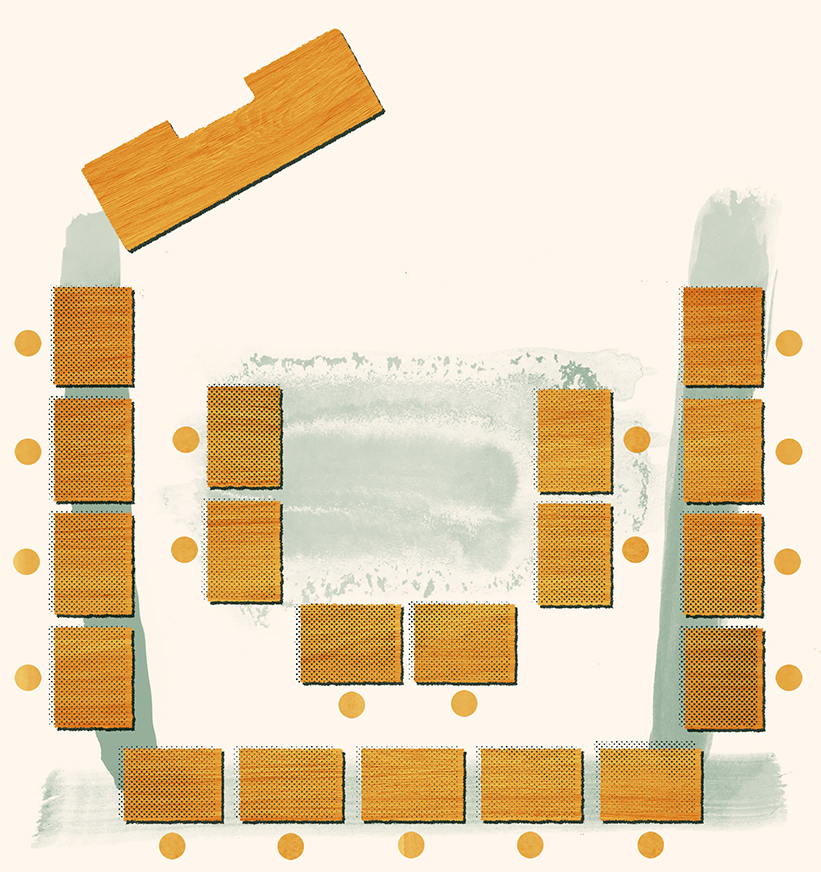
Horseshoe seating—desks are arranged in a U shape—improves lines of sight in the classroom (no heads in the way!) and creates a natural setting for conversation, collaboration, and connection. “The U shape/horseshoe layout still allows the teacher to have the lead role in the classroom but provides a sense of community and allows for peer collaboration because desks are facing inwards instead of solely on the teacher,” according to a 2020 study. Leaving one end open also allows for movement throughout the space, giving teachers the freedom to circulate freely and engage with students throughout educational activities.
Teacher tips: When the front row is removed, students are placed on equal footing, and the back row no longer feels as distant. One drawback of this layout is the amount of space it takes up; teachers sometimes add desks in the middle or along the front to partially close off the U.
3. Clusters
Small groups of desks foster collaboration.
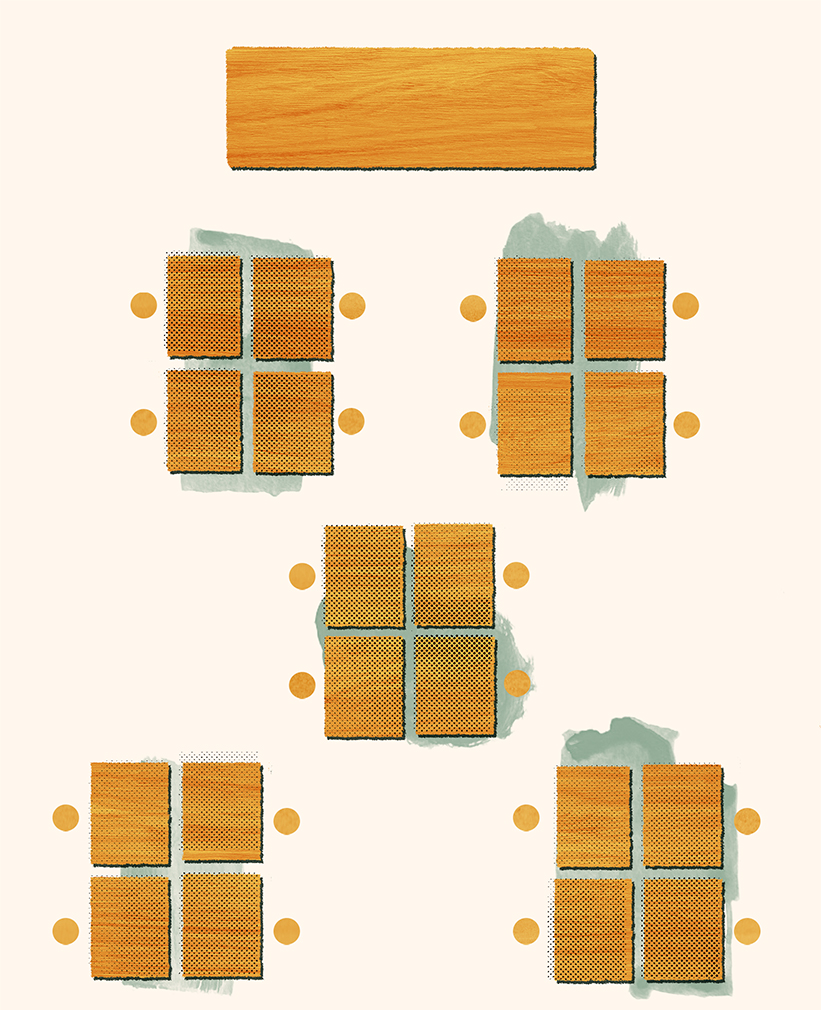
While rows work well for direct instruction, the layout falters during small group work, since students typically need to twist around to have a conversation. When contemplating group activities—or if you frequently shift between direct instruction and group activities like turn-and-talk—arrange several desks in a cluster, with pairs of students facing each other, so that students can interact and work together. “Teachers should let the nature of the task dictate seating arrangements,” researchers explain in a 2008 study. If the goal is for students to be “brainstorming or questioning the teacher, seating arrangements that facilitate interactions by proximity and position, such as clustered desks or semi-circles, should be utilised.”
For high school assistant principal Matt Griesinger, the benefits of student groups extend beyond academics. Social contexts accelerate student learning, and school communities benefit when relationships and academic work are intertwined. “When students collaborate, relationships form,” Griesinger writes. “And when that collaboration is connected to curricula, we meet relational and instructional goals in tandem.”
Teacher tips: Because switching from rows to clusters and other arrangements is common in Matt Pitman’s classroom, he establishes a routine and lets students know that it’s part of the lesson. Modeling the expected adjustments and then resorting to short phrases like “Move into your quads,” “Conference setup,” or “Project groups” trigger a short 30-second transition without fuss. “It’s not chaotic because it’s expected,” he writes.
4. Jigsaw Groups
An interactive layout designed for expert learning and peer teaching.
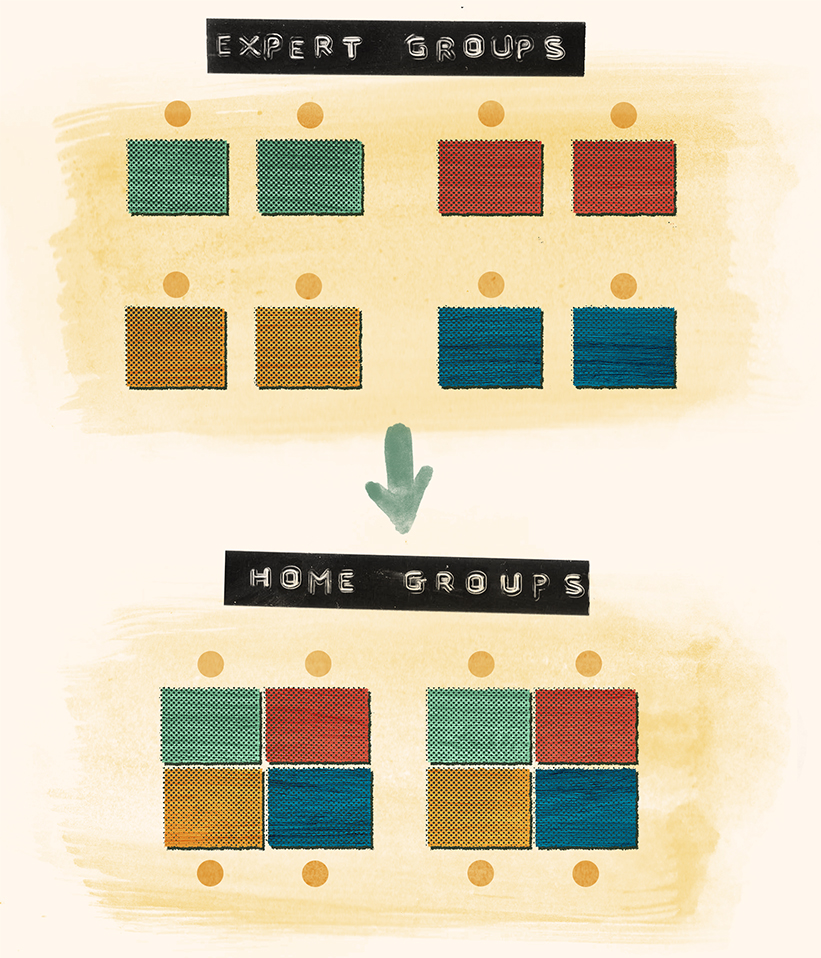
In this small group variation, students act like jigsaw puzzle pieces, moving to an expert group to master a topic before snapping back into their home groups to explain to their peers what they’ve learned. The activity involves “high levels of organization, coordination, and cognitive costs,” all of which “enhance learning, comprehension, and memory,” according to a 2024 meta-analysis.
When studying a complex event like World War II, for example, students in an expert group may learn about the key events leading up to the conflict, while students in another expert group research key figures like Adolf Hitler or Winston Churchill. The groups then reassemble into home groups, where each student teaches their specialized topic to the others to create a holistic understanding of the event or phenomenon (this also works well for things like learning the different parts of an organism and analyzing the responsibilities of the branches of government).
“The brilliance of this is that there’s so many positive outcomes,” says social psychologist Geoffrey Cohen. “It’s in the kids’ interest to cooperate, it encourages kids to talk and get to know one another better, it fosters equal status.”
Teacher tips: Begin by explaining the jigsaw process to students before diving in—many will be unfamiliar with moving between “home” groups and “expert” groups. Share visual aids or handouts that outline each phase so that students understand their roles and responsibilities throughout the activity. A 2023 meta-analysis also cautions that “the Jigsaw method is very demanding for students,” noting that some may not be up to the task of peer teaching. Ease students into the activity and give them lots of opportunities to practice. After the initial investment, however, the activity has the “potential to considerably accelerate student achievement,” explains John Hattie in his seminal book, Visible Learning: A Synthesis of Over 800 Meta-analyses Relating to Achievement.
5. L-Shaped Clusters
A hybrid approach that works for multiple activities.
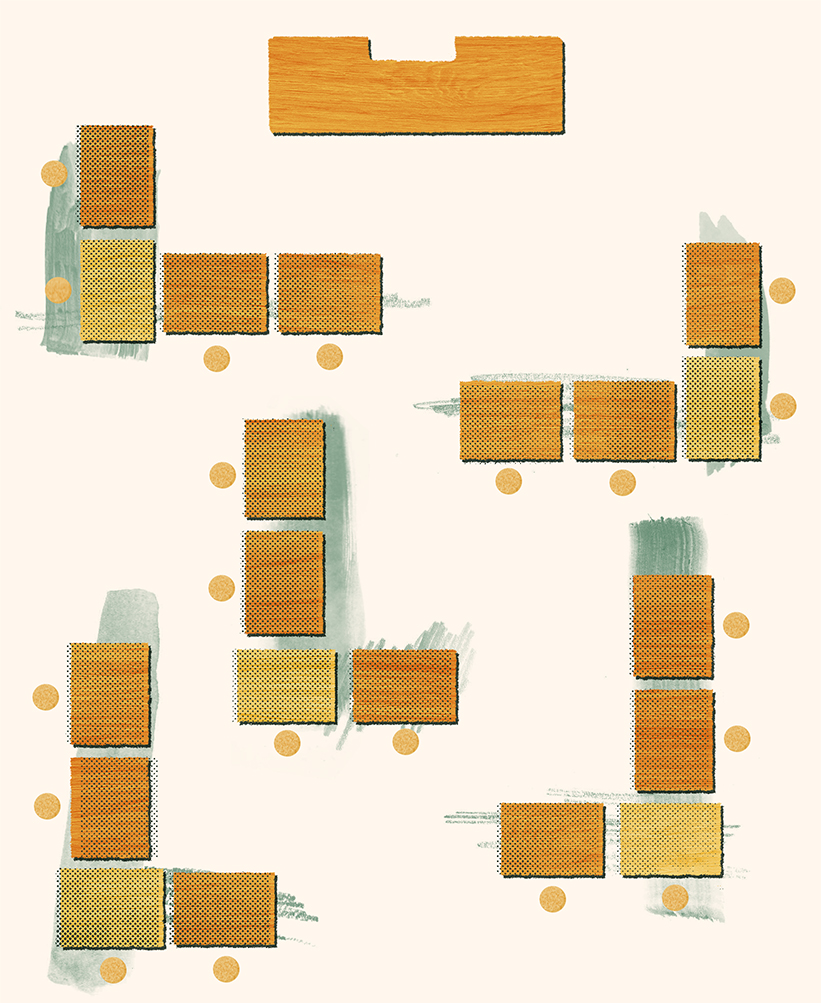
With an L-shaped cluster, students are well situated for direct instruction and group work without any seating adjustments. “It’s pretty easy for your students to see the front of the room if there’s any need for focus there and still easily converse with each other on collective or collaborative tasks,” writes Jay Schauer, a recently retired math and science teacher who used the layout for more than 10 years in his science classroom. Teachers can easily talk to students or listen in and identify opportunities to deepen learning by positioning themselves at the L’s elbow, reaching every student without the awkwardness of speaking over or around others that typically occurs with traditional table clusters.
Teacher tip: This setup works well if your desks are hard to move, but you still want the flexibility to shift teaching modalities quickly. One of the biggest advantages of this configuration, confirms Schauer, is that it works for many different activities across grade levels and subjects—group work, team quizzes, and direct instruction/student presentations/whole class discussions, for example. It also works in smaller rooms, although you may need the outer groups to be flush against the wall.
6. Socratic Circles
Desks laid in concentric circles push students to develop critical thinking, discussion, and reflection skills.
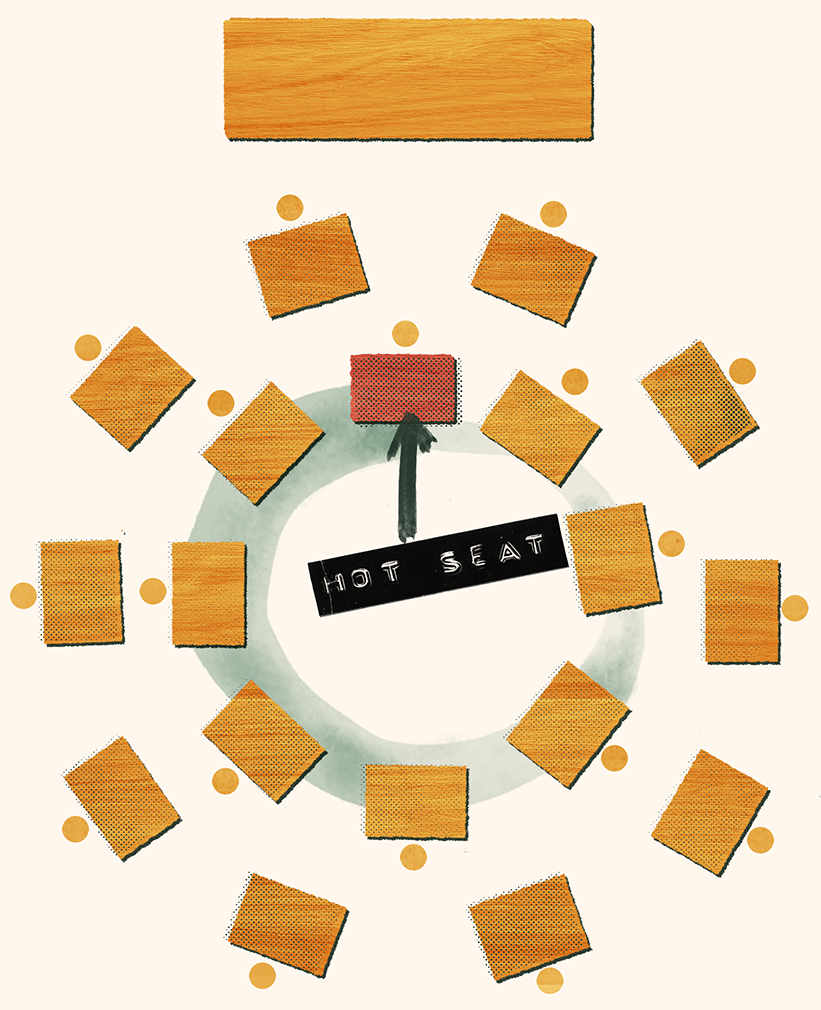
“A Socratic seminar can be a powerful tool for increasing students’ ability to analyze and interpret data,” researchers explain in a 2017 study. In this dialogic layout, some students sit in an inner circle discussing an issue while their peers in an outer circle take notes, observe, and deliver feedback and insights.
Tenth-grade history teacher Alison Beattie uses Socratic circles to encourage her students to discuss challenging topics in a safe, productive space, such as whether or not Confederate monuments should be removed, while fourth-grade teacher Ricky Clark uses a modified version to help his young learners build speaking skills while practicing how to critique their peers.
Teacher tip: A useful tweak of the layout is to add a “hot seat” in the inner circle that students in the outer circle can jump into if they want to add to the conversation. “It propels the discussion,” says seventh-grade English teacher Jennifer Montgomery. “Sometimes it turns the discussion in a different direction. And it keeps them on their toes.”
7. Flexible Seating
Bringing personalization and student ownership into the classroom.
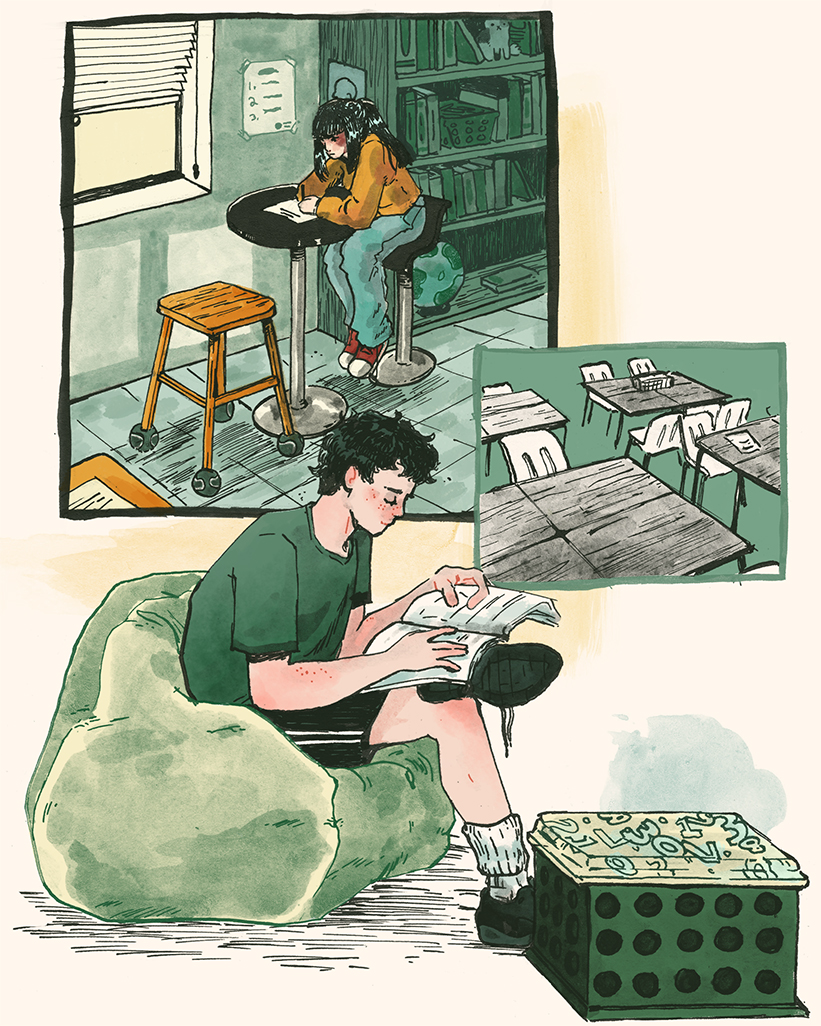
Flexible seating adds a variety of options to a classroom—couches, beanbag chairs, standing desks, floor cushions, and coffee tables, for example—that can be adapted based on learning activities and student preferences. While traditional desks are often still part of the mix, flexible seating adds a human element to classrooms, giving students a sense of autonomy and ownership over the space. In a 2023 study, researchers studied the impact of flexible seating on 107 fifth and sixth graders and found that it helped them be “more focused, more independent, and less stressed,” a conclusion that was echoed in a 2015 study of 153 classrooms/27 schools in the UK.
Teacher tips: “Simply swapping out desks for tables doesn’t ensure higher motivation, engagement, or accountability,” says second-grade teacher Kayla Dornfeld. Making classrooms more flexible—resisting a single all-purpose layout and configuring the space to meet the needs of the lesson—helps teachers “adapt to new curriculum demands and new challenges,” researchers explain in a 2015 study, which in turn is “better for absorbing, memorizing, and recalling information.”
To avoid chaos, set clear routines and boundaries: “Students know that I reserve the right to move them at any time if they aren’t fully engaged and able to work in their selected spot,” says Dornfield.
8. Technology Stations
A segmented layout keeps screen-based distractions in check.
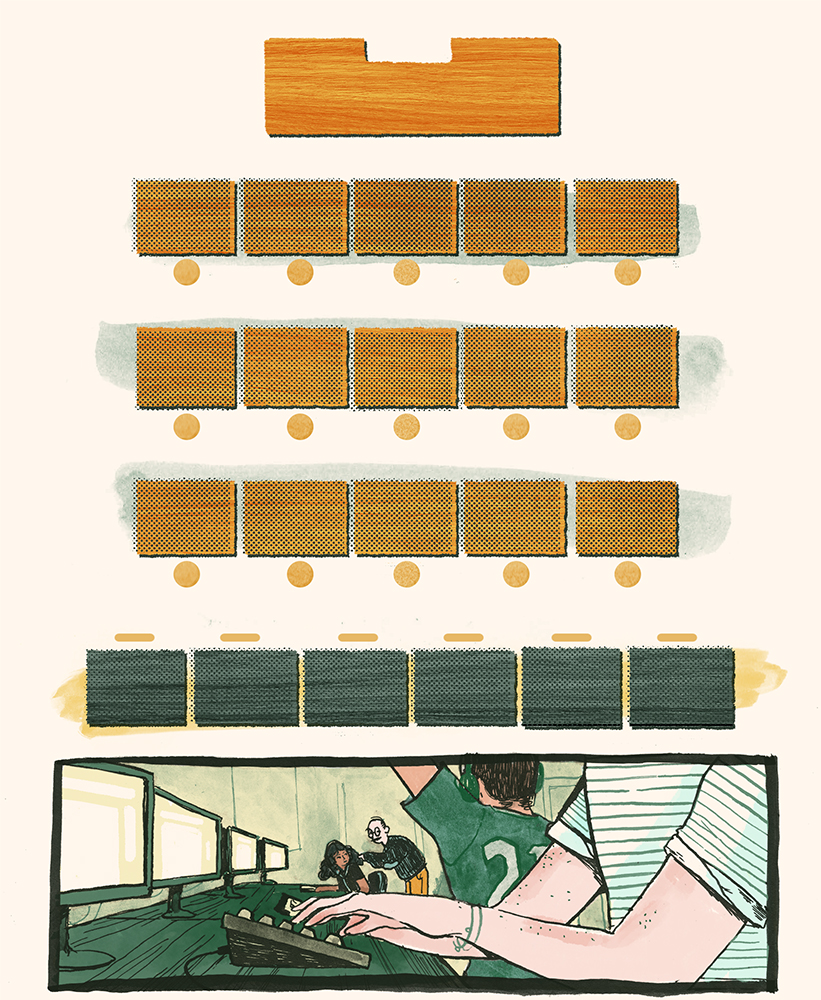
If you can’t see your students’ computer screens, there’s a good chance some will be on YouTube or TikTok instead of focusing on the lesson. Distractions onscreen usually spread to nearby classmates—in fact, a 2020 study found that students who sat next to a classmate browsing the web saw their quiz scores drop by nine percentage points. That’s why arranging computer desks along the back of the room or perpendicular to the teacher—so that all (or most) screens are at least partially visible—can keep lessons on track.
Sometimes lessons require all children to be on the computer together, but a tech station layout works well when students need to rotate between different parts of a project or are frequently asked to perform independent or group research.
Teacher tips: Despite the benefits of technology, students often can’t resist the temptation of a funny video or social media update. Consider displaying your tech rules in a visible area of the classroom, explains multigrade teacher Megan Ryder, who reviews her classroom’s tech rules on a poster every day. When looking at each student’s screen, she’s also careful to give positive feedback. “Being able to look at their screen but then celebrate them and ask, ‘Hey, can I put your work up on the big screen?’ I’m using it in a positive way.”
9. Kinesthetic Seats
The antidote to sluggish minds.
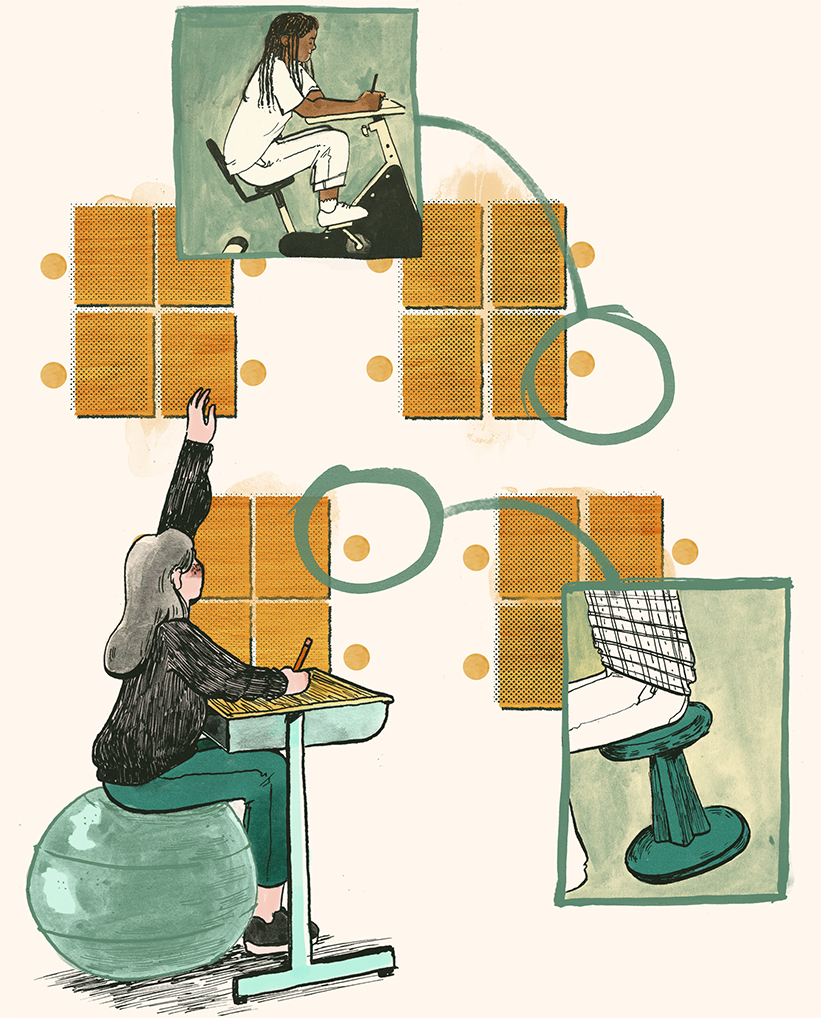
Sitting still for hours isn’t just unhealthy, it also can erode a student’s ability to stay focused, researchers conclude in a 2020 study. Incorporating seating options like bouncy balls, standing desks, and kneel-and-spin desks help keep kids on track and alert.
When teachers introduced kinesthetic desk options in second-grade classrooms, on-task behavior jumped from a baseline of 60 percent to 89 percent, revealing that incorporating movement during lessons can have a dramatic impact on a student’s ability to stay mentally engaged. The benefits even extended to students who sat on a carpet awaiting their turn to use the kinesthetic seating—suggesting that simply having the options available can benefit the entire classroom.
Teacher tips: “Each year I add one new type of seating,” writes elementary school teacher Tom Deris, noting that grants helped fund these incremental purchases. “I started with ball chairs, and then added tables with wheels and wobble stools.” To avoid distracting squeaks and bouncing, he recommends setting firm rules at the start. “For example, with the ball chairs, students are asked to have their feet on the floor at all times and to avoid excessive bouncing,” writes Deris. “If students aren’t following the rules, we review them so everyone is clear about what’s expected.”
10. Conference/Banquet Seats
Dual rows of desks create a formal layout for structured dialogue and debate.
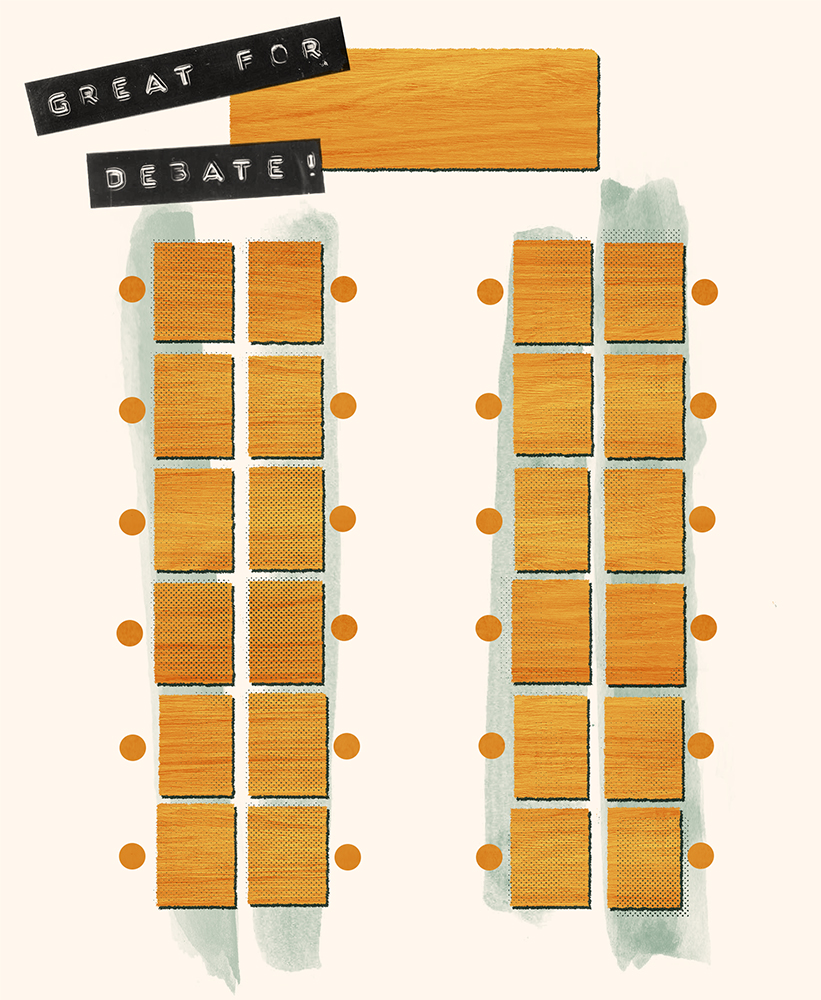
“Sometimes we form two big conference-style groups for class debates,” writes Pitman, adding that the physical layout of the room should support the activity. According to a 2023 study, debates help students learn how to “construct and deliver a compelling argument that is well-supported by both reasoning and evidence,” making it an effective approach for building literacy, argumentation, and critical thinking skills.
Teacher tips: “The structure and facilitation of debate make it safer than some other forms of communication for young people to engage in, because the rules encourage people to listen to different views,” explain AnnMarie Baines, Diana Medina, and Caitlin Healy in Amplify Student Voices: Equitable Practices to Build Confidence in the Classroom.
Reorganizing your desks into a collaborative/dialogue-centered layout sends the message that all students’ opinions matter and everyone is invited to participate. “Debate is more than just arguing,” says Jill East, a former classroom teacher and current professor at Palm Beach Atlantic University. “A structured debate allows students to dive into the material, think critically, and engage personally with their learning. It’s an approach that breathes life into subjects across the curriculum and also builds essential life skills.”
11. Learning Zones
Distinct areas configured for a variety of activities and purposes.
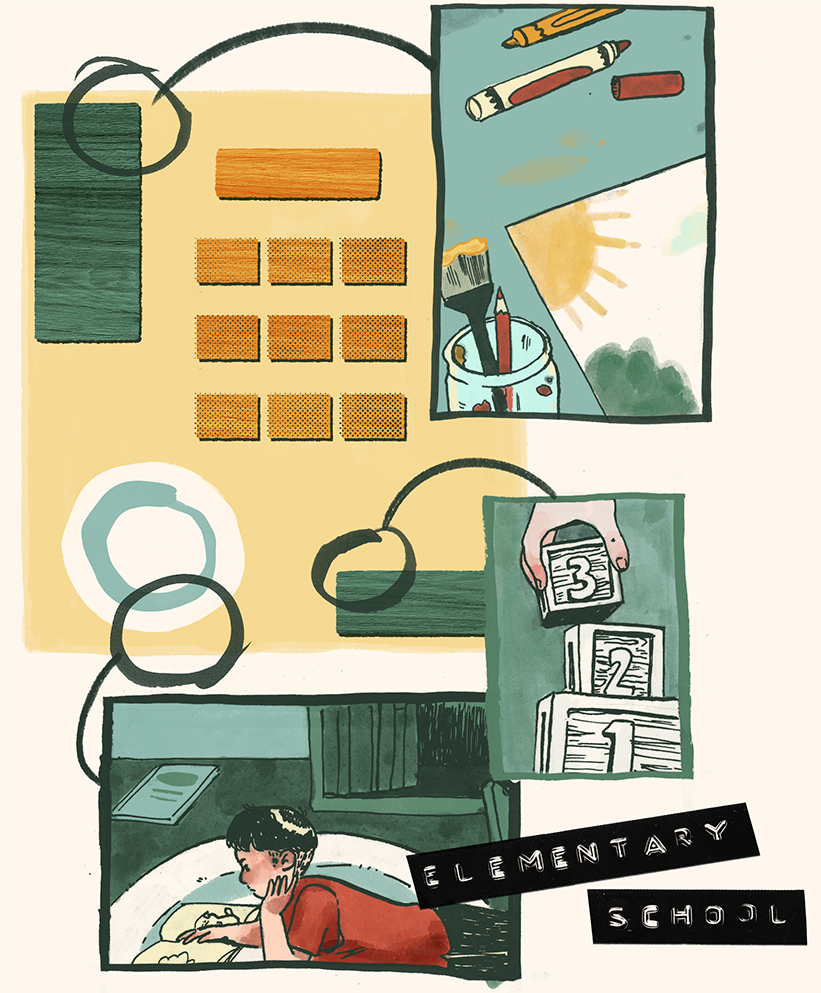
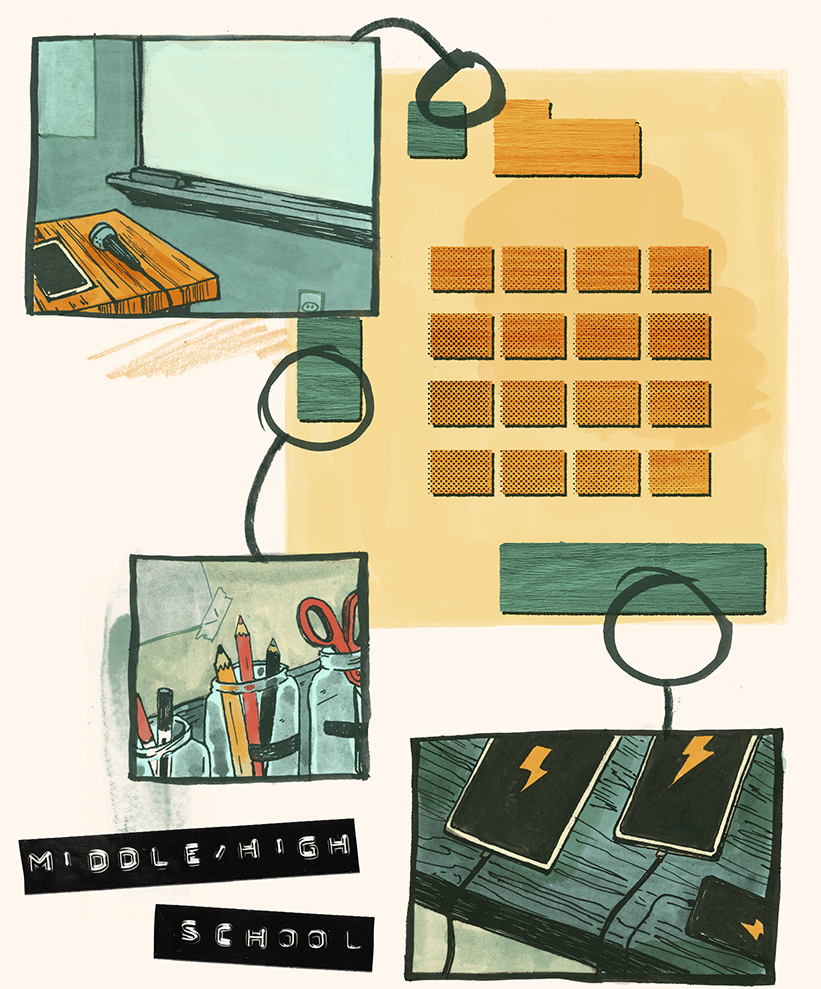
Learning zones can be an effective way to tailor instruction for different student needs, according to a large-scale 2020 study. For young learners, this can include a discovery zone, full of arts and crafts materials, manipulatives, games, puzzles, and fun books and magazines that spark imagination, writes former teacher and principal Veronica Lopez. First-grade teacher Valerie Gallagher likes to add a multimedia zone and a sorting station to her classrooms so that students can watch videos, look at pictures, and create cutouts of words to sort in different categories. “Although the content is the same, having the stations really allows me to tailor my lessons to each individual group of learners,” says Gallagher.
Teacher tips: “Don’t let a small classroom be your kryptonite,” writes Lopez. “You can set up a learning zone in a bookcase, on a shelf, on one bulletin board, or on a small desk or table.” In her elementary class, a discovery zone, news zone, supplies zone, and quiet zone all work in concert to give students a more robust learning experience. For middle and high school students, learning zones can be more structured, such as station-based book study, an independent research zone, a “visible learning” space with a few whiteboards, or a small audio station to create podcasts or audio how-tos.
All graphics by Chelsea Beck. Additional writing, research, and editing by Steve Merrill and Sarah Gonser.
